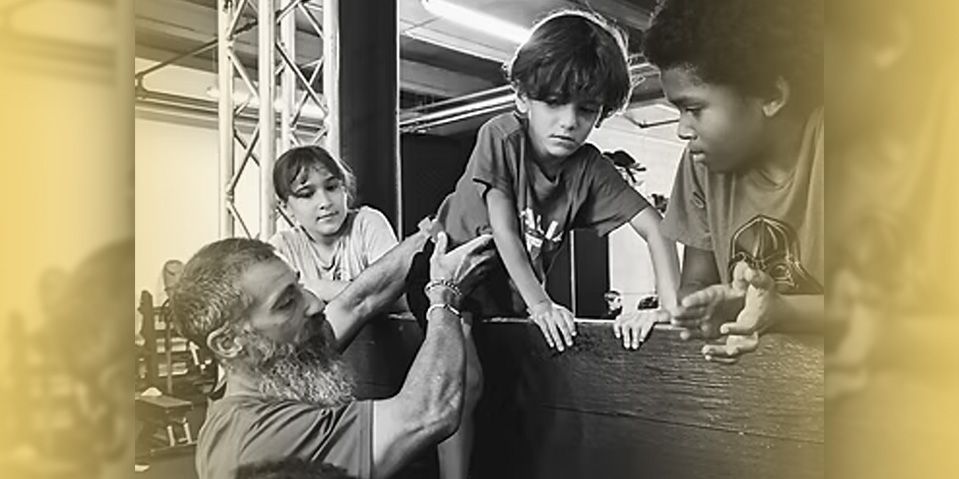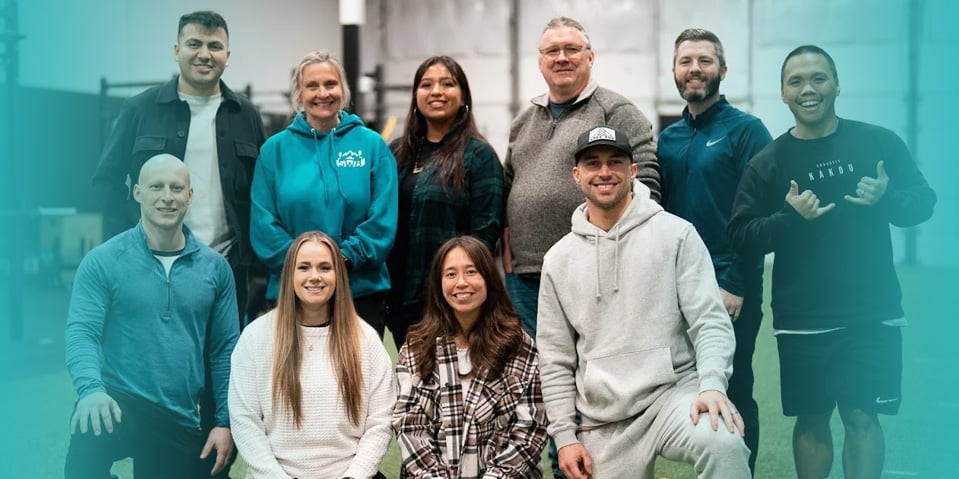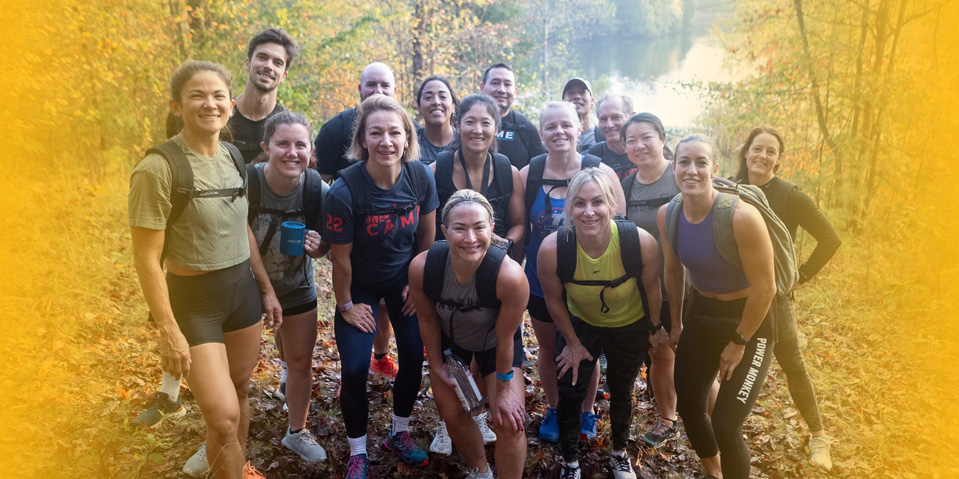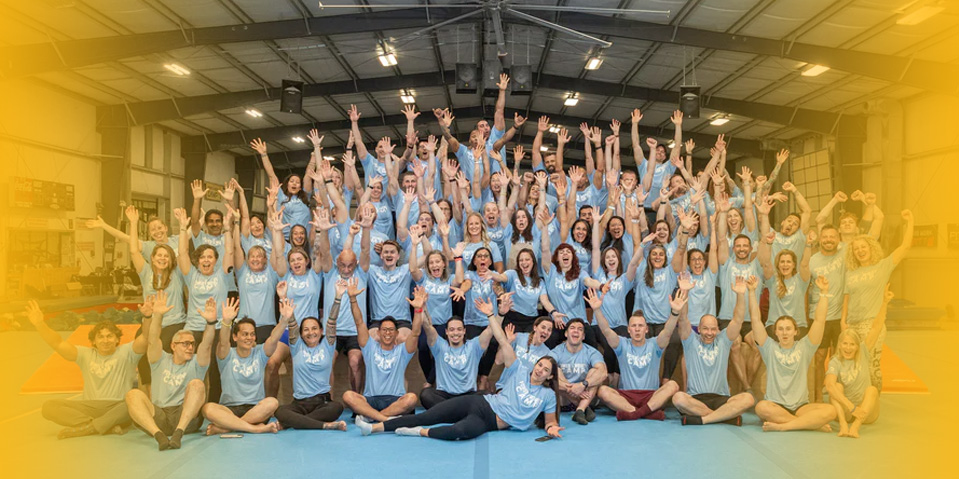
- by Hilary Achauer
- April 25, 2025
Pep Mendez never set out to create an obstacle-based gym for kids.
In fact, in 2017 he wasn’t involved in the fitness industry at all. Back then, Pep owned a production company with his childhood best friend, Dave Foreman, an attorney. One of their clients asked Pep and Dave to create content for a company that sold endurance supplements, and as part of the work they attended a Spartan race.
Once there, they met a man who owned an obstacle course racing gym for adults.
“He had a daughter, and she was excellent,” Pep said. Impressed by the girl’s race performance, Pep asked about her story and found out she was a victim of bullying at school. As a result she spent much of her time hanging out with her dad.
“Since he was in that Spartan race circuit, she would participate and she got a handle of it very early on,” Pep said.
Seeing the girl’s success sparked something in Pep.
“This is great for adults,” Pep said he thought at the time, “but I think something like this should be available for kids.”
At that point, Pep said, Spartan’s approach with kids focused on entertaining them so the parents could participate in the obstacle race.
However, Pep saw potential in training kids to run obstacle courses so they could gain the confidence and mental strength he saw in the adults. He envisioned a space for kids who might not have an interest or a talent in team sports.
“The body is built to move, whether you're an artist, a scientist, or a gamer,” Pep said.
So Pep and Dave decided to make a change and focus their efforts on a new business: the Warrior Kids Academy, an obstacle-based kids’ program for ages 4 to 17 based in Miami, Florida.
Teaching Grit and Perseverance

In 2018, after opening the Warrior Kids Academy, Pep and Dave took their obstacle course concept to a local school.
“Our setup was very similar to Spartan,” Pep said. “We had a bunch of obstacles and running. After that event we had 35 new kid members at the gym.”
From there, their membership grew as parents realized they had an option for kids who didn’t enjoy team sports.
As time has gone on, Pep realized the value in his program is not only in the physical obstacles. For Pep, the obstacle course training is a way to teach kids—and their parents—about grit and perseverance.
In addition to teaching physical skills like climbing ropes and scaling walls, Pep and his coaches focus on resilience, teamwork, and leadership. The physical training is combined with developing critical thinking and social skills, all within a supportive environment that encourages children to push their limits and explore their potential.
“When we started, we were maybe 75 percent obstacles, and now we're 75 percent just mindset and speaking to the kids, and then using the apparatus in the equipment more for demonstration,” he said.
Over the years schools have reached out to Pep and Dave asking them to develop after school programs.
“Before you know it, Warrior Kids turned into a youth development curriculum,” Pep said, focusing not just on obstacle racing but deeper topics like fear management, failure management, confidence, empathy, perseverance, discipline, and commitment.
Where the Impossible Becomes Possible

Most of the kids who come into the gym and can’t climb a rope. For many, their initial reaction is, “That’s impossible, I can’t do it.”
“It is possible,” Pep tells them, “you just don't have the training or the technique and you haven't had a chance to practice.”
From there, Pep and his coaches break down the skill into small, manageable tasks.
First, they have the kid sit on a box and practice a J-hook wrap, which is a technique for wrapping your feet around the rope that uses leg—not arm—strength.
Even if the kid isn’t able to get this technique right away, Pep encourages them to keep working, telling the parents that just because they don’t have success right away, that doesn’t mean they should quit. Many of the parents Pep meets aren’t accustomed to watching their kid fail, again and again, but he tells them to trust his process, to help their child commit.
Then, after trying consistently for a month, the kid can usually climb a rope—a victory that’s all the sweeter for the struggle.
It’s then that Pep turns to the parent and says, “Thank you for committing to helping us teach your kid how to climb a rope,” explaining that the child can tap into this determination and resolve not only when facing obstacles at Warrior Kids Academy, but at school, in a social setting, with anything challenging them.
“All we need is to have them commit and for your support and my support to teach them my plan. That's at the core of our teaching, and every human being needs it,” he said.
Pep said he’s seen his approach work for many different types of kids, including a child with severe autism. The child’s parents wanted to find an activity their son might enjoy, but in their first interaction with Pep they listed all the things he couldn’t do. Pep stopped them before they could finish.
“Don't tell me what he can or cannot do,” Pep told them.
“I'll make sure he doesn’t fall on his face. I'll make sure the kid is safe, but we're gonna see what the child can do,” he said.
Then Pep asked the mom to wait outside, because he was worried she’d step in and help her son, interfering with his progress.
To get the child started, Pep employed a technique he calls “peer-to-peer influence,” which is having the kids participate in teaching. He told the kids their mission for the day was to empower this one child, so they might need to sacrifice their fun for the sake of somebody else’s progress. After a month of this, the child made progress that astonished his mother, learning physical skills she didn’t know were possible for her son.
After working with kids for years, Pep’s advice for parents is to talk about failure with their kids, explaining how useful the experience of failing can be.
“Failure can be a great thing if you know how to articulate it to your child,” he said.
His number one piece of advice for parents is to step back and stop talking.
“Watch more, talk less,” Pep said. “Be present.”
About Author, Hilary Achauer
 Hilary is a renowned fitness business writer, marketing content writer, and journalist. She’s written content for start-ups, entrepreneurs, executive coaches, wellness providers, gyms, and CrossFit. Her focus is always on telling the best story with a clear, compelling style and being able to engage readers, bring in new customers, or build an audience.
Hilary is a renowned fitness business writer, marketing content writer, and journalist. She’s written content for start-ups, entrepreneurs, executive coaches, wellness providers, gyms, and CrossFit. Her focus is always on telling the best story with a clear, compelling style and being able to engage readers, bring in new customers, or build an audience.
Fill out a short form to contact us with your questions or to receive a customized quote.
Recent Stories
-
 The Origin and Impact of Organización de Amigos
December 17, 2025
The Origin and Impact of Organización de Amigos
December 17, 2025 -
 Bringing CrossFit to Schools
November 18, 2025
Bringing CrossFit to Schools
November 18, 2025 -
 Building Community Through Fitness
October 16, 2025
Building Community Through Fitness
October 16, 2025 -
 A Summer Camp for Fitness Enthusiasts
September 19, 2025
A Summer Camp for Fitness Enthusiasts
September 19, 2025 -
 A Gym for Everyone: How The OUT Foundation Works to Make Fitness More Inclusive
August 19, 2025
A Gym for Everyone: How The OUT Foundation Works to Make Fitness More Inclusive
August 19, 2025